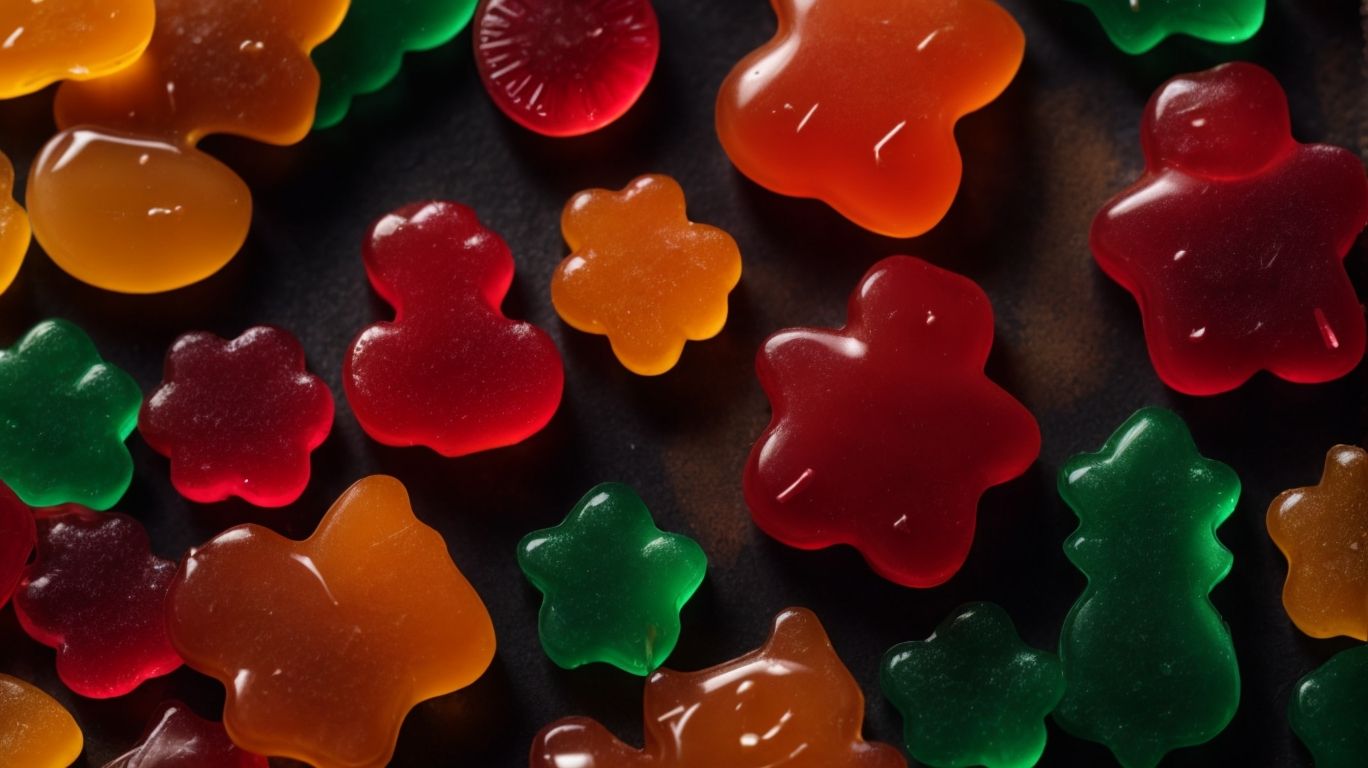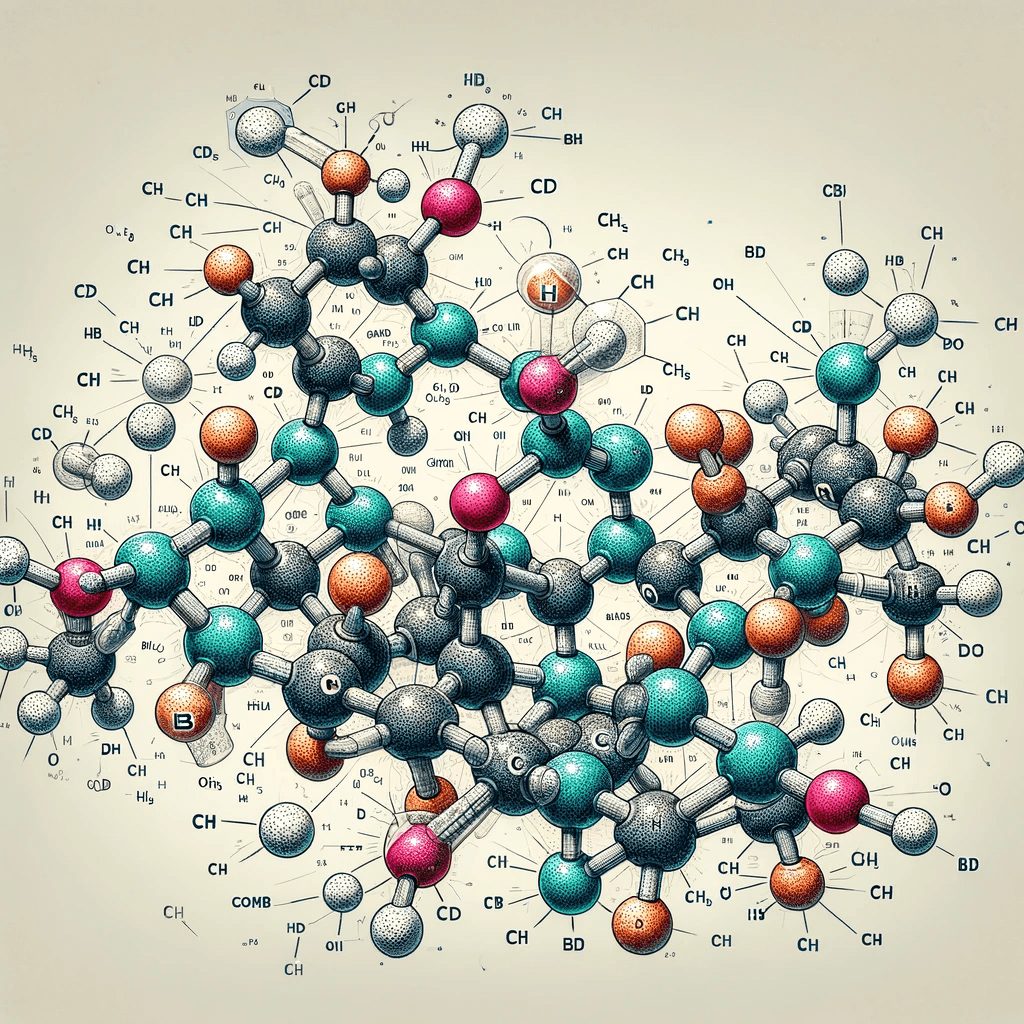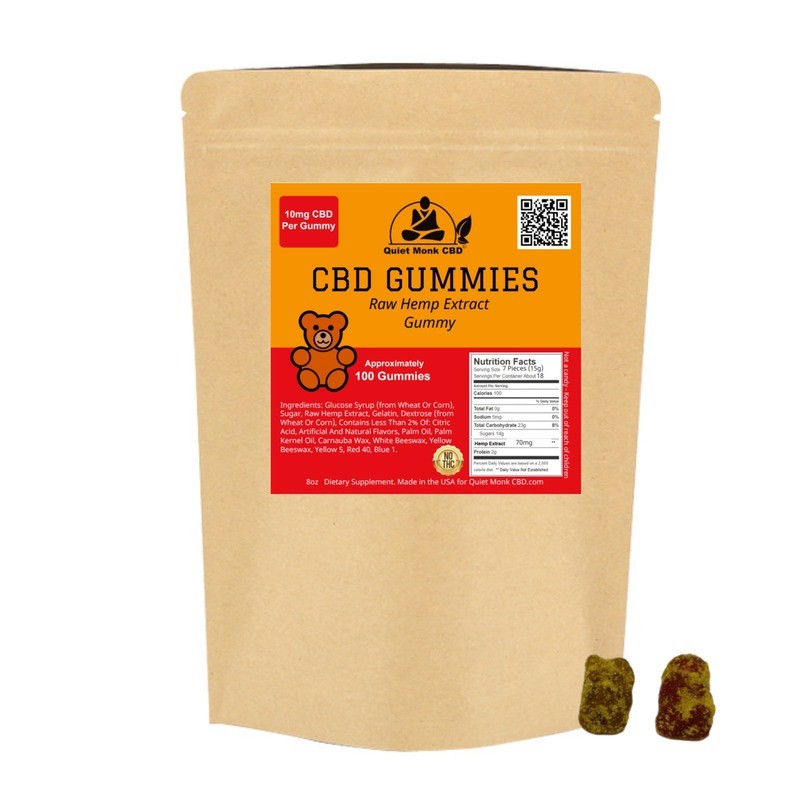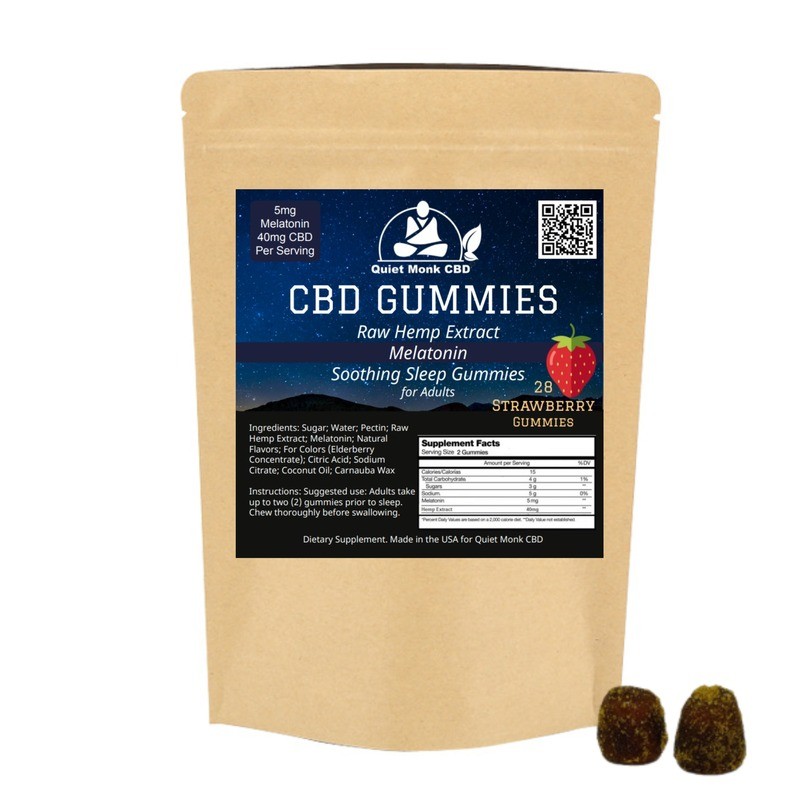
Are you curious about how drug tests work when it comes to CBD and THC? In this article, we will explore the THC threshold for positive results, the impact of CBD on drug tests, and the different types of CBD variants such as full-spectrum, isolate, and broad-spectrum.
We will also discuss the minimum THC levels required for positive tests, the risks of THC exposure from CBD products, and factors that can lead to false positive results.
Stay tuned to learn more about CBD to THC conversion in the body and how to ensure THC-free CBD products.
Key Takeaways:
- CBD gummies may show up on a blood test, depending on the type of CBD used and its THC levels.
- Full-spectrum CBD contains trace amounts of THC, which can result in a positive drug test.
- To avoid a false positive, always read labels and verify the sources of your CBD products for their THC content.
Introduction
In the realm of drug testing and cannabinoid consumption, the interplay of CBD and THC presents a complex landscape involving various testing methods, regulations, and safety considerations.
When considering drug testing, the distinction between CBD and THC is crucial due to their differing effects and legal statuses.
CBD, or cannabidiol, is non-intoxicating and commonly used for its therapeutic properties, while
THC, tetrahydrocannabinol, is responsible for the psychoactive effects of cannabis.
Accurate testing methods, like gas chromatography-mass spectrometry or liquid chromatography-tandem mass spectrometry, are essential to differentiate between these compounds to ensure reliable results.
Regulatory oversight and quality control measures play a pivotal role in maintaining the integrity and precision of drug testing practices in this intricate landscape.
How Drug Tests Work
Drug tests rely on various methodologies such as urine testing, blood analysis, saliva examination, and hair follicle testing, utilizing immunoassay and mass spectrometry techniques to detect substances in the body.
Urine testing is one of the most common methods due to its non-invasive nature and ease of sample collection. This method detects metabolites of drugs in the urine sample.
Blood analysis, on the other hand, provides real-time results, making it suitable for detecting recent drug use.
Saliva examination is quick and convenient, revealing recent drug use within a few hours.
Hair follicle testing offers a longer detection window, sometimes months, by analyzing drug metabolites deposited in hair strands.
Immunoassay techniques are preliminary screening tests that detect the presence of drugs based on antigen-antibody reactions.
Mass spectrometry, a highly sensitive method, confirms and quantifies the substances present in the sample. These techniques are crucial in drug testing, ensuring accuracy and reliability in identifying substances in the body.
THC Threshold for Positive Results
The threshold for THC detection in drug tests varies based on factors such as the sensitivity of immunoassay screenings, confirmatory testing thresholds, and the presence of THC metabolites in biological samples.
In terms of immunoassay screenings, they are the initial step in drug testing, offering quick results but with a potential for false positives due to their lower specificity compared to confirmatory tests. Confirmatory testing, such as gas chromatography-mass spectrometry, is then employed to validate positive results and eliminate false alarms.
The thresholds for confirmation vary based on regulatory guidelines, with stringent criteria to ensure accurate identification of THC. False positive results can have far-reaching consequences, affecting reputations and potentially leading to unwarranted actions such as job loss or legal repercussions.
Can CBD Result in Positive Drug Tests?
The presence of CBD in drug tests can lead to positive results due to factors like THC contamination, cross-contamination risks, inadvertent exposure, and mislabeling of products.
THC contamination can occur when products labeled as containing only CBD actually have traces of THC present, leading to unexpected positive drug tests. Cross-contamination risks may arise during the manufacturing process, where THC from other products could potentially contaminate CBD items. Inadvertent exposure to THC, for example through secondhand smoke or shared utensils, can also result in positive drug tests for individuals using CBD products. Product mislabeling, whether intentional or unintentional, can mislead consumers about the actual contents of the CBD products they are using, potentially causing positive drug test outcomes.”
Impact of CBD Types on Testing
The type of CBD products consumed, whether full-spectrum, broad-spectrum, or CBD isolate, can significantly influence the outcomes of drug tests, affecting regulatory compliance, quality control, and the need for comprehensive Certificate of Analysis.
In terms of drug testing, the ingredient composition of CBD products plays a crucial role. Full-spectrum CBD, which contains trace amounts of THC along with other cannabinoids and terpenes, has the highest likelihood of causing a positive result in drug tests due to THC presence. On the other hand, broad-spectrum CBD, which retains other compounds except for THC, may still pose a slight risk of THC contamination. CBD isolate, the purest form of CBD without any other cannabinoids or substances, typically carries the lowest risk of triggering a positive drug test.
FDA regulations surrounding CBD products remain somewhat ambiguous, leading to variances in product quality. To address potential issues, reputable CBD manufacturers conduct rigorous quality assurance practices to maintain consistency and reliability in their products. One essential aspect of ensuring product safety and transparency is the inclusion of a Certificate of Analysis (CoA) from independent third-party labs. This certificate provides detailed information about the product’s cannabinoid content, potency, and the presence of any contaminants, offering consumers peace of mind regarding the product’s quality and compliance with regulatory standards.
Understanding CBD Variants
Diving into the world of CBD variants unveils a spectrum of options, including full-spectrum extracts, broad-spectrum formulations, and CBD isolates, each characterized by distinct cannabinoid and terpene profiles.
Full-spectrum CBD gummies contain a wide range of cannabinoids, including THC, along with various terpenes and other beneficial compounds found naturally in the cannabis plant. This composition is thought to create an ‘entourage effect,’ enhancing the overall therapeutic potential. On the other hand, broad-spectrum CBD retains multiple cannabinoids and terpenes but eliminates THC, making it a preferred choice for individuals sensitive to THC or subjected to drug testing.
CBD isolates, on the contrary, are pure CBD without any other compounds, offering a precise and potent form of cannabidiol. While isolates lack the entourage effect, they are favored by those seeking THC-free options or specific dosing accuracy.
Full-spectrum, Isolate, Broad-spectrum CBD

Full-spectrum, broad-spectrum, and CBD isolate represent distinct categories in the realm of CBD products, offering varying compositions of cannabinoids and terpenes that contribute to their unique properties and effects.
Full-spectrum CBD products contain a wide array of cannabinoids, including THC (in permissible levels as per regulations), CBD, CBG, and a rich terpene profile, harnessing the entourage effect for enhanced therapeutic benefits.
On the other hand, broad-spectrum CBD excludes THC while retaining other cannabinoids and terpenes, making it a favored choice for those seeking benefits without THC’s psychoactive effects.
Conversely, CBD isolate is pure cannabidiol devoid of other cannabinoids and terpenes, suitable for individuals aiming for CBD-specific effects or have sensitivities to other compounds.
THC Levels & Testing
Understanding the correlation between THC levels and drug testing is crucial, as even minimal exposure to THC from CBD products can pose risks of triggering positive results in drug screenings.
Drug tests typically have set THC concentration thresholds above which a sample is deemed positive for cannabis use. For instance, workplace drug tests often utilize a threshold of 50 nanograms per milliliter (ng/mL) to determine a positive result.
It’s essential to note that individuals consuming CBD products containing trace amounts of THC may inadvertently surpass these thresholds, leading to unexpected consequences. This highlights the importance of accurate labeling and regulation of CBD products to ensure consumers are well-informed about potential THC exposure risks.
Minimum THC for Positive Tests
The minimum THC concentration required for a positive drug test outcome depends on various factors, including the cutoff levels set for detection, the presence of THC metabolites, and the accuracy of immunoassay and confirmatory testing methods.
Typically, drug testing laboratories establish cutoff levels to differentiate between negative and positive test results. These thresholds define the minimum amount of THC or its metabolites that must be present in a sample to be considered positive. Metabolites like THC-COOH, the primary metabolite of THC, can be detected for a longer period than THC itself due to their slower elimination from the body. Immunoassay tests are often used as initial screening tools due to their cost-effectiveness and speed, but confirmatory tests like gas chromatography-mass spectrometry (GC-MS) or high-performance liquid chromatography (HPLC) are employed for precise quantification and verification of results.
Risks of THC Exposure from CBD
The potential risks of THC exposure from CBD consumption extend beyond individual use, encompassing concerns related to product contamination, inadvertent exposure, and mislabeling issues that can lead to unexpected outcomes in drug testing scenarios.
Contamination during the production process is one of the primary sources of unintended THC presence in CBD products. This could occur due to shared manufacturing facilities or equipment where THC-containing substances are also handled. Additionally, secondhand exposure risks are a growing concern, as those around CBD users, like family members or coworkers, might unknowingly inhale THC vapor. Mislabeling further complicates matters, where inaccurate labeling of CBD products arises, leading consumers to unknowingly ingest THC and potentially failing drug tests due to the THC content exceeding legal limits.
Factors for False Positive Results
Several factors contribute to the occurrence of false positive results in drug tests, including the presence of contaminants, risks of secondhand exposure, and the prevalence of mislabeling issues in CBD products.
Contaminants, such as cross-reactivity with common substances or adulterants, can skew drug test results, leading to false positives. In addition, inadvertent exposure to substances like THC in secondhand smoke or environmental factors can also impact test outcomes. Mislabeling practices, where products contain different substances than listed, further complicate the accuracy of drug tests, especially in the case of CBD products. Understanding these nuances is crucial for interpreting drug test results accurately and avoiding misconceptions about an individual’s drug use history.
Contamination, Secondhand Exposure, Mislabeling
Contamination, secondhand exposure, and mislabeling represent critical factors that can contribute to the inaccurate interpretation of drug test results, emphasizing the importance of product integrity and quality control measures in CBD consumption.
Contamination in CBD products can occur during various stages, such as cultivation, extraction, or packaging, leading to the presence of unwanted substances like pesticides, heavy metals, or residual solvents. Secondhand exposure risks stem from the potential transfer of these contaminants to individuals through shared spaces or contact with contaminated surfaces, raising concerns about unintended ingestion. Mislabeling practices, where products are inaccurately labeled regarding their contents or potency, further compound these challenges by creating confusion for consumers and regulatory agencies alike.
Product purity and transparency are essential for maintaining consumer trust and ensuring accurate drug test results, as contaminants or undisclosed ingredients can skew outcomes and put individuals at risk.
CBD to THC Conversion in the Body

The metabolic conversion of CBD to THC in the human body involves complex processes influenced by factors such as metabolism rates, bioavailability of compounds, and individual physiological responses to cannabinoids.
When CBD enters the body, it undergoes a series of metabolic transformations. One of the key pathways involves the enzymatic action of cytochrome P450 (CYP) enzymes, particularly CYP3A4 and CYP2C9, which play a crucial role in converting CBD to its metabolites, including THC. These enzymes are primarily found in the liver and intestines, where they help break down and process a wide range of substances.
The extent of this conversion can vary widely among individuals due to genetic factors, diet, and overall health status. Some individuals may have a more efficient metabolism that converts CBD to THC at a faster rate, leading to higher levels of psychoactive effects.
Ensuring THC-Free CBD Products
Ensuring the absence of THC in CBD products requires diligent practices such as carefully reading product labels, verifying sources, and demanding comprehensive Certificate of Analysis to guarantee product purity and compliance.
Reading product labels is crucial as it provides information on the ingredients used and their quantities. Verifying the source of the CBD product ensures it’s coming from a reputable and reliable supplier, reducing the risk of contamination or mislabeling. Relying on the Certificate of Analysis (CoA) offers detailed insights into the product’s cannabinoid profile, confirming the absence of THC and ensuring it meets quality standards.
Reading Labels, Verifying Sources
Reading product labels and conducting source verification are essential steps in ensuring the quality and safety of CBD products, aligning with FDA guidelines and the requirements for comprehensive Certificate of Analysis.
When you delve into the intricate world of CBD products, understanding the information on the labels becomes crucial. These labels not only provide insight into the composition and purity of the product but also offer vital information regarding dosage, usage instructions, and potential allergens that might be present. By scrutinizing these details, consumers can make informed decisions that prioritize their well-being and health.
Equally important is validating the sources of CBD products.
Ensuring that the supply chain and manufacturing processes meet stringent standards guarantees the products are free from contaminants and are produced in a safe and ethical manner. To avoid counterfeit or low-quality products, reputable sources and transparent supply chains are paramount. By choosing products from trusted sources, consumers can have confidence in the quality and efficacy of the CBD products they are using.
Conclusion
Navigating the intersections of CBD consumption, THC exposure, and drug testing methodologies requires a nuanced understanding to address potential job implications, medical considerations, and safety concerns effectively.
It is essential to recognize that CBD, derived from hemp plants and known for its therapeutic benefits, is legal at the federal level but may contain trace amounts of THC. On the other hand, THC, the psychoactive compound found in cannabis, is restricted in many states due to its intoxicating effects. In terms of drug testing, being aware of the differences between CBD and THC is crucial to avoid inadvertent positive results that could impact employment opportunities or medical treatment plans.
Frequently Asked Questions
Do CBD Gummies show up in blood work?
Yes, CBD gummies can show up in blood work if the test is specifically looking for CBD. However, CBD itself does not show up as a positive result on a standard drug test.
Will CBD Gummies cause a positive result on a drug test?
No – maybe, usually CBD gummies will not cause a positive result on a standard drug test. Drug tests typically look for THC, the psychoactive compound found in marijuana, and CBD gummies do not contain enough THC to cause a positive result. However, we always recommend not taking any CBD if you know you are going to be taking a blood test within 45 days. Just to be safe!
What type of drug test would detect CBD Gummies?
A specialized drug test that specifically looks for CBD, such as a urine test for CBD metabolites, would detect the presence of CBD gummies in your system.
How long do CBD Gummies stay in your system?
The length of time that CBD gummies stay in your system depends on a variety of factors, including dosage, frequency of use, and your body’s metabolism. Generally, CBD can be detected in your system for up to a week after consumption.
Can CBD Gummies affect my blood work results?
No, CBD gummies should not affect your blood work results. However, it is always best to inform your doctor or healthcare provider if you are taking any supplements, including CBD.
Are there any risks associated with consuming CBD Gummies?
While CBD gummies are generally considered safe, there are some potential risks, such as interactions with other medications or side effects such as drowsiness. It is important to speak with your doctor before incorporating CBD gummies into your routine.


